The decade of 1960 marked a very important period of space exploration as it saw the launch of the first satellite, Sputnik I, by the USSR officially beginning human adventure into uncharted territory outside the Earth. “Space” as we know it has the capacity to awe, frighten, and tremble us: “Surrounded by infinite space, and swallowed up in an immensity of being, man seems but as a drop of water in the ocean, mixed and confounded with the general mass.”, as John Bonnycastle put it and was echoed by Pascal: ‘The eternal silence of these infinite spaces terrifies me‘. But where do these terrifying “spaces” of space actually begin?

During the infancy of space exploration, Hungarian- Engineer and physicist Theodore von Kármán came up with a proposal to define space by something that is known as the Kármán lines. The Kármán line is an imaginary boundary positioned at an altitude of 100 kilometers above sea level and it is generally accepted as the place where Earth ends and outer space begins. It roughly marks the altitude where traditional aircraft can no longer effectively fly. Anything traveling above the Kármán line needs a propulsion system that doesn’t rely on the lift generated by Earth’s atmosphere.

But isn’t the Earth in a mire of space itself? Could we not say that an aircraft, when taking off from one palace and landing on the other, is flying in space? When someone inches past the 50-mile/80-kilometer mark, the United States of America dubs anyone an astronaut. When a spacecraft after having flown tortuously into the cosmos heads home to our “Pale Blue Dot”, its entry is marked at 400,000 ft(121 kilometers). With these fluctuating yardsticks of where space is, the question of where space begin becomes even more pressing.
Understanding Space Better
Why is determining a space boundary necessary?
There are perspectives about space ranging from Newtonian ideas to modern relativistic interpretations- each of which offers insights into the properties and dynamics of space. Newton is quoted to have said:
“Absolute space, in its own nature, without regard to anything external remains always similar and immovable… Absolute motion is the translation of a body from one absolute place to another.”

― Carl Sagan, Cosmos
Defining the boundary of space allows for measurements and observations that contribute to our understanding of the structure and evolution of the universe and our home, the Earth. In an era of spacefaring, where putting people on various other planets and satellites are on the horizon, legally establishing the boundary of space is important as it helps create frameworks that govern cooperation, resource usage, and activities related to exploring space.
There are philosophical implications too. How would one make sense of the musings people have about space? Take Jack Kerouack’s imperishable words:
“They never show any expression, they are like empty space. Do you think the emptiness of space will ever crumble away? Mountains will crumble, but the emptiness of space, which is the one universal essence of mind, the vast awakenerhood, empty and awake, will never crumble away because it was never born.”
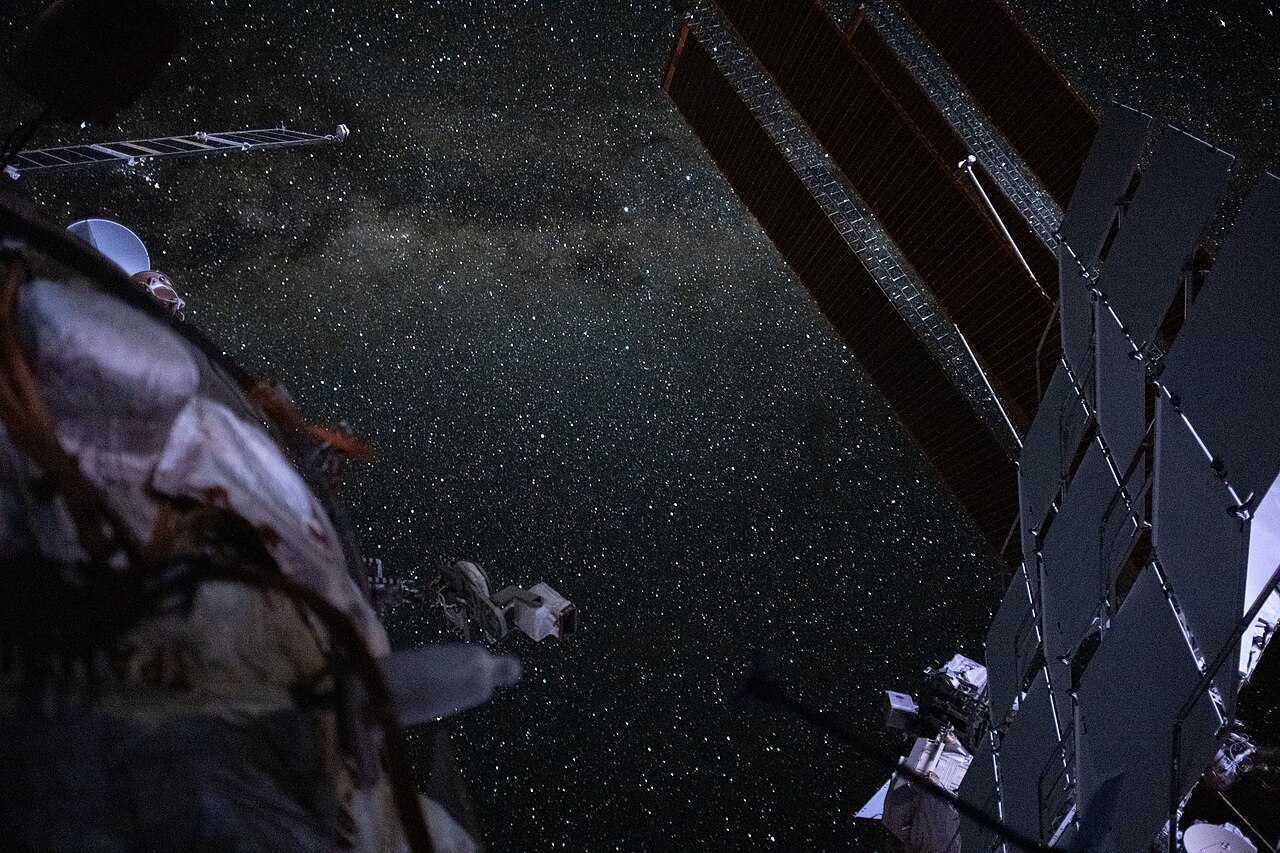
Photo: NASA Johnson Space Center | Wikimedia Commons
Or Haruki Murakami in his “Kafka On the Shore” talks poetically about “space”.
“Beyond the edge of the world there’s a space where emptiness and substance neatly overlap, where past and future form a continuous, endless loop. And, hovering about, there are signs no one has ever read, chords no one has ever heard.”
As we are philosophically caught in between such nostalgia for understanding space and its implications, our idea of where space begins needs a bit of clarity- not simply for legal purposes.
Exploring the Boundaries of Space

In the Ancient Times
How we make sense of the concept of space has been heavily influenced by ancient Greek thinkers Aristotle and Ptolemy, who pondered the boundaries between the Earth and the vastness of the sky. Aristotle’s idea of space is visibly distinct from that of Newton, and it has been explained by a theoretical physicist, Carlo Rovelli:
“For Aristotle, it is absurd to speak of “empty” space, because space is only the spatial order of things. If there are no things—their extension, their contacts—there is no space. Newton imagines that things are situated in a “space” that continues to exist, empty, even when divested of things. For Aristotle, this “empty space” is nonsensical, because if two things do not touch it means that there is something else between them, and if there is something, then this something is a thing, and therefore a thing that is there. It cannot be that there is “nothing.” “
Aristotle ducked away from explicitly defining the boundary of space as in his model of space, he proposed concentric spheres encompassing celestial bodies. Ptolemy refined this concept by introducing epicycles to explain the movements of celestial objects, but like Aristotle, his model was devoid of a demarcation for space.
Space Race helped reify the boundaries
Fast forward a couple of millennia and we have the launch of Sputnik 1 by the Soviet Union in 1957. This occasion, befitting of a few letters by leaders worldwide, was a milestone in defining the boundary of space as he crossed the Kármán line.
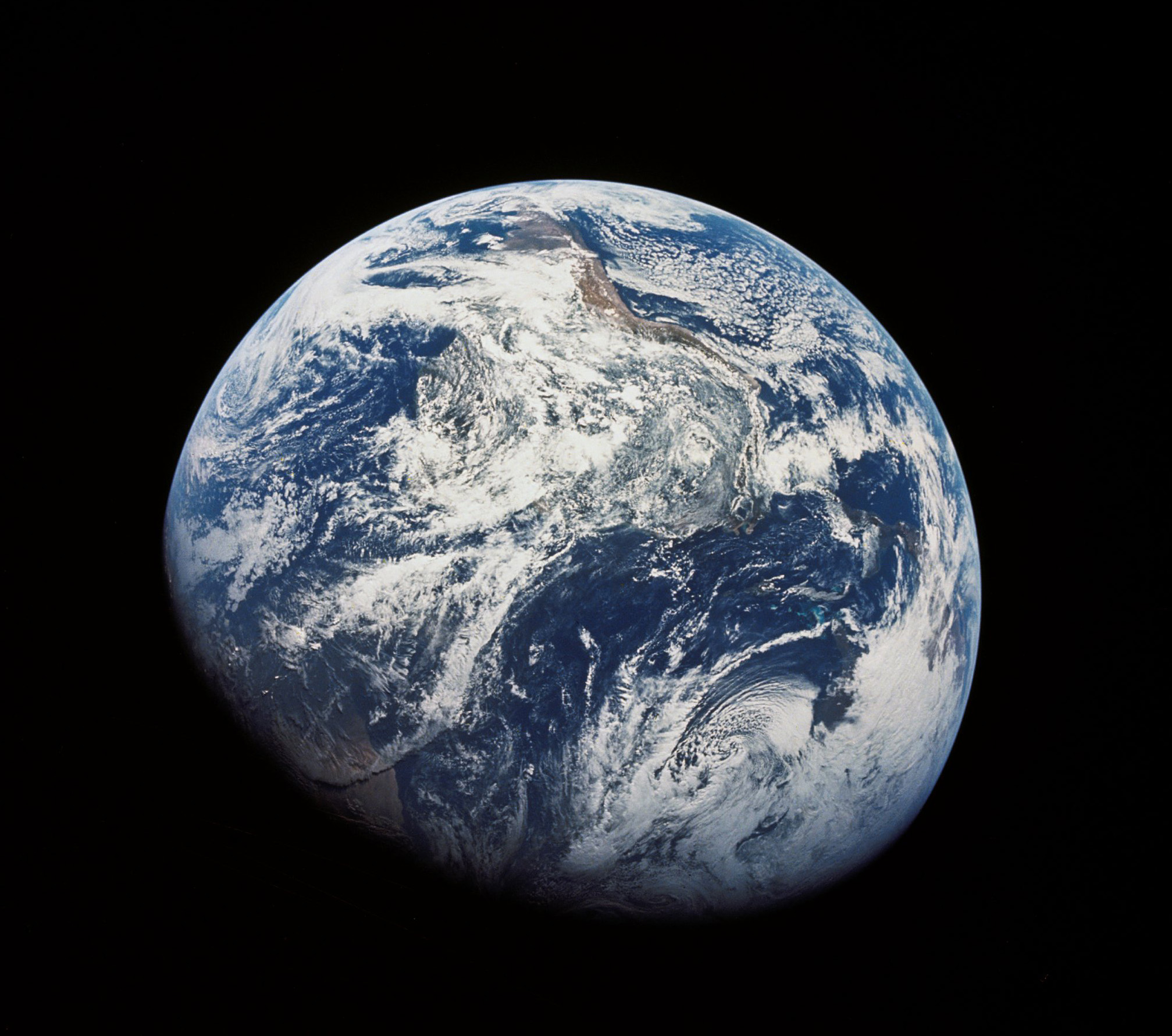
One of the first images of the whole of the Earth. This was taken from a distance of about 30,000 km.
The Fédération Aéronautique Internationale (FAI), aka “World Air Sports Federation,” was the governing body that set Yuri’s record for the highest vertical distance covered by a human. They have proposed a barrier of 100 based on the views of Karman and his Born–von Karman boundary conditions. Karman’s own words read:
“This is certainly a physical boundary, where aerodynamics stops, and astronautics begins, and so I thought, why should it not also be a jurisdictional boundary? … Below this line, Space belongs to each country. Above this level, there would be free Space.”
A few positions differ from the Karman line as a boundary that defines “space.”
But some people dub Karman’s work on the “boundary of space” as a “folk theorem,” for the “Karman line” isn’t backed up by a peer-reviewed “published article,” The US will certify you as an “astronaut”- someone who’s been to Space- if you travel upwards of 80 kilometers in an air(or should we say space)craft.
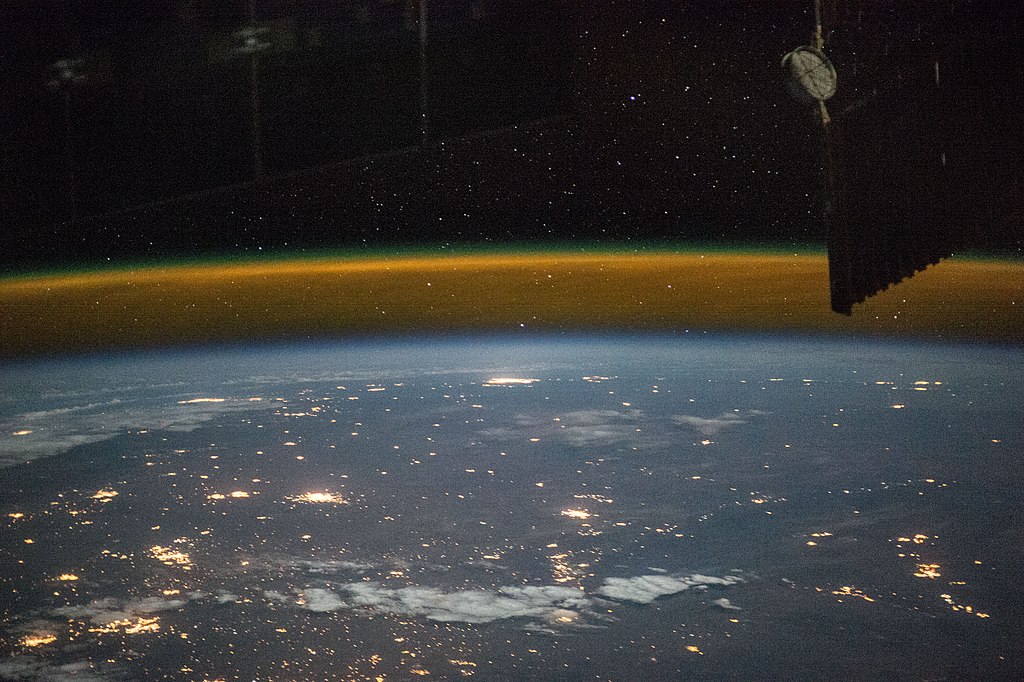
Earth’s atmosphere as captured from the International Space Station where the orange line(140–170 km) which is produced by the Earth’s atmosphere is perched at an altitude higher than the Kármán line.
Arguments have it that space would consist of a region where the Earth’s atmosphere is non-existent. But observations of the luminous glow of the outermost layer of the Earth- often dubbed geocorona- reveal that it stretches up to 100,000 kilometers which is even beyond the moon.
In this regard, the International Space Station (which lies approximately 400 km above the Earth), hasn’t escaped Earth’s atmosphere, and some are hesitant to call it “Space”.

Other Scientific Approaches
Defining where exactly space begins or ends has been controversial and challenging as a myriad of concepts, some of which are physical, astronomical, and philosophical come forth. Magnetopause is where a planet’s magnetism and the surrounding solar wind or interstellar space come into contact but even the magnetopause is not static. It ebbs and does with changes in solar activity and the potency of a planet’s magnetic field.
Factors Affecting the Boundary of Space
A most reductionist approach might be to say that the End of Earth marks the beginning of space. In such a case, a jump into the “air” might be dubbed a journey to space. “Vacuum-ness” is often thought to be synonymous with “space”. Before the Michelson-Morley experiment, the luminiferous aether was thought to be pervading through “space,” allowing the possibility of light to propagate. Let’s dive into these concepts and misunderstandings that change our perceptions of where space begins.

Gases in the atmosphere scatter the blue light giving the sky a bluish hue which forms a continuum against the lack of light in the emptiness of the space above.
Gravity
No sooner we end up in a region of “zero gravity”, we think of as having treaded to “space”. But gravity isn’t truly “zero” anywhere. The moon despite being 384,400 km away, still is tugged at by the Earth’s gravitational pull. Every other object in the universe is being nudged and shoved around by any other object- no one can escape the tethers of gravity.
Aerodynamic flight, a Piloting perspective
If we were to answer the question “How high can planes go before finding it too difficult to fly?”, we might get some idea as to where space starts. After all. “airplanes” are thought to glide in “the air” as opposed to “rockets” that leap into “space.”

Aircraft owes its lift to the pressure difference between the top and the bottom of its wings allowing the plane to thrust into the skies. The US Military and the National Advisory Committee on Aeronautics posit that upwards of 80 kilometers or so, the aerodynamic forces can’t quite thrust an aircraft.
The case for Atmospheric drag
During re-entry, the atmospheric drag on a space vehicle becomes almost as high as four times that of “aeronautical drag.” around 122 kilometers. This is why NASA proposes that space begins 122 km away from the Earth.
Going around the Earth
A satellite can be on a stable orbit around the Earth either on a “circular”, or an “elliptical” one. The lowest altitude from the Earth that an elliptically revolving satellite has been stable was observed around 80 miles while the lowest a satellite can revolve around the Earth without propulsion is at an altitude of 93 miles.
Legal and Regulatory Framework
Outer Space Treaty adopted by the General Assembly of the United Nations in 1967 is seminal in shaping he regulatory framework of the “beginning of space”. It dictates that no nuclear weapons or any other kind of WMD put into orbit around Earth, celestial bodies, or anywhere else in outer space. It also forbids military installations on celestial bodies, testing weapons or conducting military exercises of any kind, constructing military bases or fortifications of any kind.
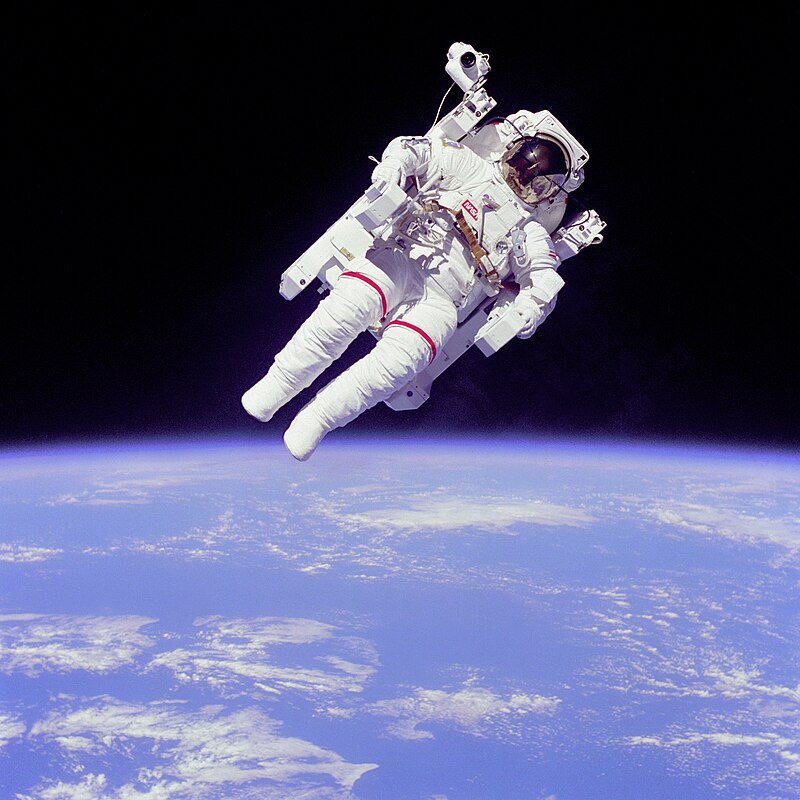
It has only been half a century of so since we’ve set foot in space, which necessitates wearing special suits. How we shall adapt to outer space, where shall the boundaries of space exploration extend, and how legal framework might be established with regards to questions such as these are complex.
Another legislative force is the Moon Agreement expounds on the Outer Space Treaty and provides a framework for the peaceful use of moon-like celestial bodies such as regulation of mining activities or extraction of resources.
Exploration of space
Space exploration- integral to which have been advanced spacecraft, and robotic probes that could explore distant astronomical objects- has been integral to understanding the various layers of our concepts of “space”:
When Voyager I was about to inch past the Solar system, the cameras of this spacecraft turned earthwards, and took the barely recognizable picture of the Earth. The photograph has been immortalized in the words of Astronomy:
“Look again at that dot. That’s here. That’s home. That’s us. On it everyone you love, everyone you know, everyone you ever heard of, every human being who ever was, lived out their lives. The aggregate of our joy and suffering, thousands of confident religions, ideologies, and economic doctrines, every hunter and forager, every hero and coward, every creator and destroyer of civilization, every king and peasant, every young couple in love, every mother and father, hopeful child, inventor and explorer, every teacher of morals, every corrupt politician, every “superstar,” every “supreme leader,” every saint and sinner in the history of our species lived there-on a mote of dust suspended in a sunbeam.

The Earth is more or less a mote of dust in a streak of light on the right. This is the photograph that inspired Sagan to caption it so memorably.
The Earth is a very small stage in a vast cosmic arena. Think of the endless cruelties visited by the inhabitants of one corner of this pixel on the scarcely distinguishable inhabitants of some other corner, how frequent their misunderstandings, how eager they are to kill one another, how fervent their hatreds. Think of the rivers of blood spilled by all those generals and emperors so that, in glory and triumph, they could become the momentary masters of a fraction of a dot.”
Since these words were carved, we’ve been able to put together pictures of a black hole or an astonishing nebula. But space, owing to its multiplicity, and its multifariousness of names, has added to the difficulty of defining a “space.” properly.
Interplanetary Space
Voyager I- the most distant thing that humans have sent to Space- was the first probe to make it across the space between the planets in our Solar System- interplanetary Space- and march forward to interstellar space.

https://www.facebook.com/PetrHoralekPhotography
Interplanetary dust, zodiacal light, and false dawn.
Interstellar Space
The closest star to the Sun, Proxima Centauri, is approximately 4 light years away from the Earth. Some stars are billions of light years away. The spaces between stars, the emptiness between the flickering dots in the sky are dubbed to be interstellar space.
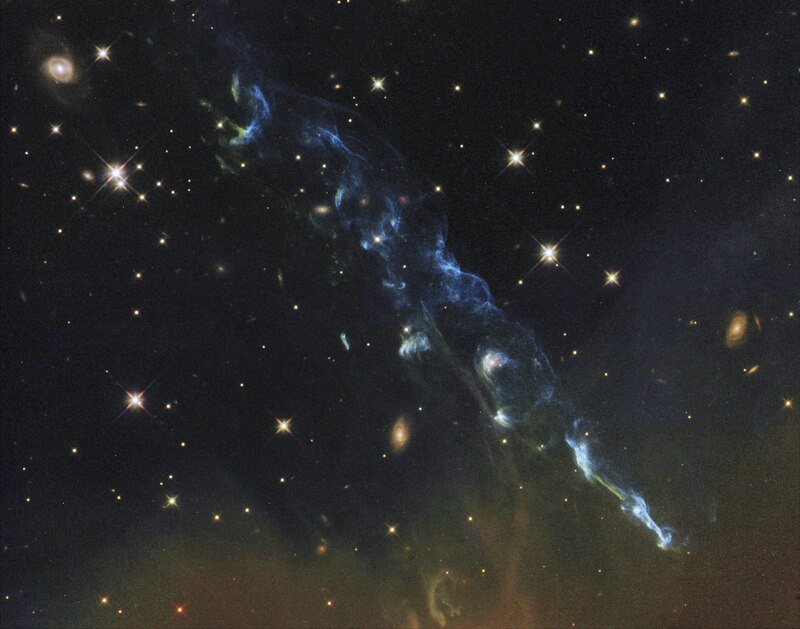
Objects associated with newborn stars releasing gases in the interstellar medium.
Intergalactic Space
Conservative estimates have it that it would take 5 million years for light from one galaxy to reach another. Galaxy clusters, on the other hand, might be billions of light-years distant.
Future Prospects
Advancements in spacecraft architecture, propulsion mechanisms, and instrumentation will definitely push our understanding of space. With possible explorations to the Moon, Mars, and exoplanets, the definitions of “space” might change, and so might our understanding of where space begins.
Where does space extend to?
The farthest reaches of outer space are around 46 billion light years away, and this is what is dubbed “the edge of the observable universe” or “deep space”). For all we know, Space is infinite in its course. As is James Joyce’s brilliant sentence: ““The cold of interstellar space, thousands of degrees below freezing point or the absolute zero of Fahrenheit, Centigrade or Réaumur: the incipient intimations of proximate dawn.”
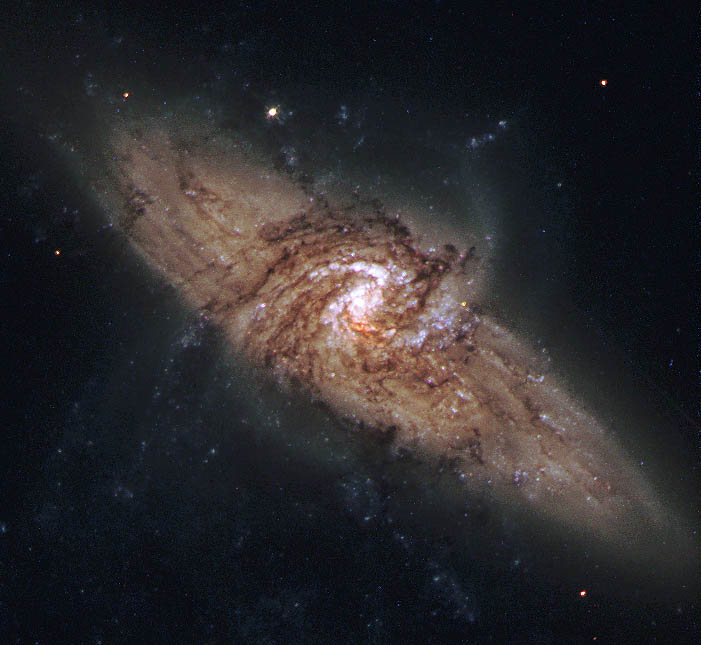
Coincidentally aligned spiral galaxies. (NGC 3314)
Conclusion
The exploration of “space” and its depths, its extent, and its beginning have still not been able to mark a distinct boundary of space as we know it. But the reflection of the “Pale Blue Dot”
“Our posturings, our imagined self-importance, the delusion that we have some privileged position in the Universe, are challenged by this point of pale light. Our planet is a lonely speck in the great enveloping cosmic dark. In our obscurity, in all this vastness, there is no hint that help will come from elsewhere to save us from ourselves. The Earth is the only world known so far to harbor life. There is nowhere else, at least in the near future, to which our species could migrate. Visit, yes. Settle, not yet. Like it or not, for the moment the Earth is where we make our stand. It has been said that astronomy is a humbling and character-building experience. There is perhaps no better demonstration of the folly of human conceits than this distant image of our tiny world. To me, it underscores our responsibility to deal more kindly with one another, and to preserve and cherish the pale blue dot, the only home we’ve ever known.”
as written by Sagan still gives us hope, and a sense of responsibility to understand “space” and its “beginnings” and its markings better.
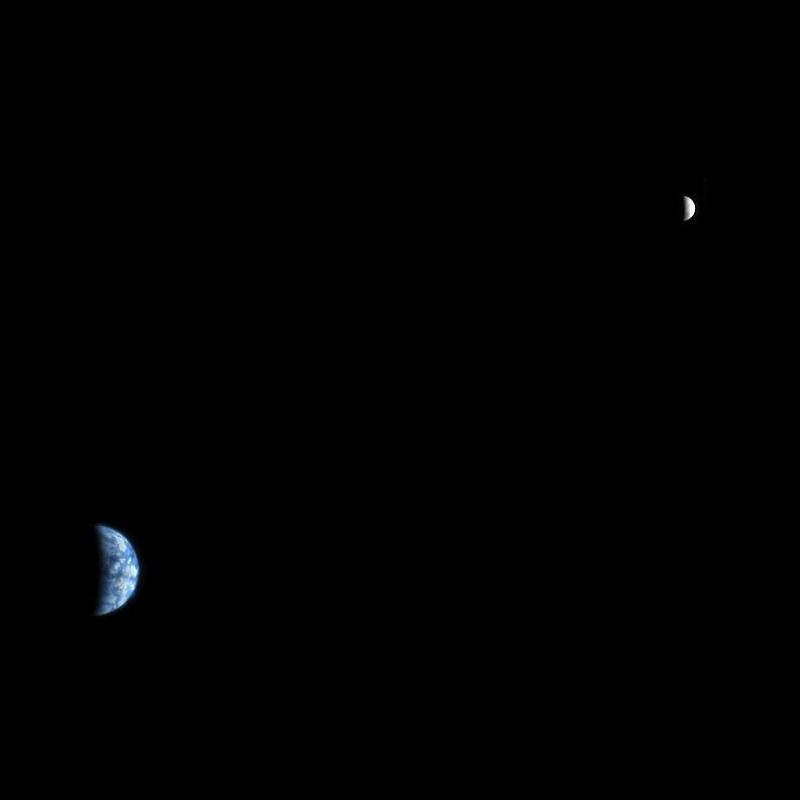
A picture of the Earth and the Moon as photographed from Mars by the Mars Reconnaissance Orbiter
Frequently Asked Questions:
What is outside the observable universe?
There are vast stretches of space, from where light hasn’t had enough time to reach us. These are collectively known as “unobservable universe.” The exact nature of what lies beyond is speculative and depends on various cosmological theories, such as whether the universe is finite or infinite in extent. Some posit that “our universe” is a microcosm in the great macrocosm of the Cosmos.
Where does the Earth’s atmosphere end?
The Earth’s atmosphere doesn’t have a definitive end; instead, it gradually thins out as altitude increases. The outermost layer of the Earth’s atmosphere, the exosphere, extends to about 630,000 km (391,000 miles), or 50 times the Earth’s diameter as observed in a recent study. Beyond this point, atoms and molecules become increasingly sparse until they eventually merge with the interplanetary medium. So the Earth’s atmosphere could be thought of as a continuum rather than one with a clear demarcation.

Earth’s atmosphere with different types of clouds. You can also see shadows cast by different types of clouds.
Where in space are we?
Earth is located within the Milky Way galaxy, which is part of a vast structure known as the Local Group. The Local Group contains several dozen galaxies, including the Milky Way and the Andromeda Galaxy, among others. On a larger scale, the Milky Way is part of the Virgo Supercluster, which is part of the even larger structure of the observable universe.
Is the outer space infinite?
Whether outer space is infinite is an open-ended question for it has unobservable portions. Some cosmological models propose a finite but unbounded universe, while others suggest an infinite universe.
Is there a beginning and end to space?
According to the Big Bang theory, the observable universe originated from an extremely hot and dense state approximately 13.8 billion years ago as it exploded out of a singularity. Some like Roger Penrose have the idea of Conformal Cyclical Cosmology- an idea that universes are created, destroyed, and reborn again.
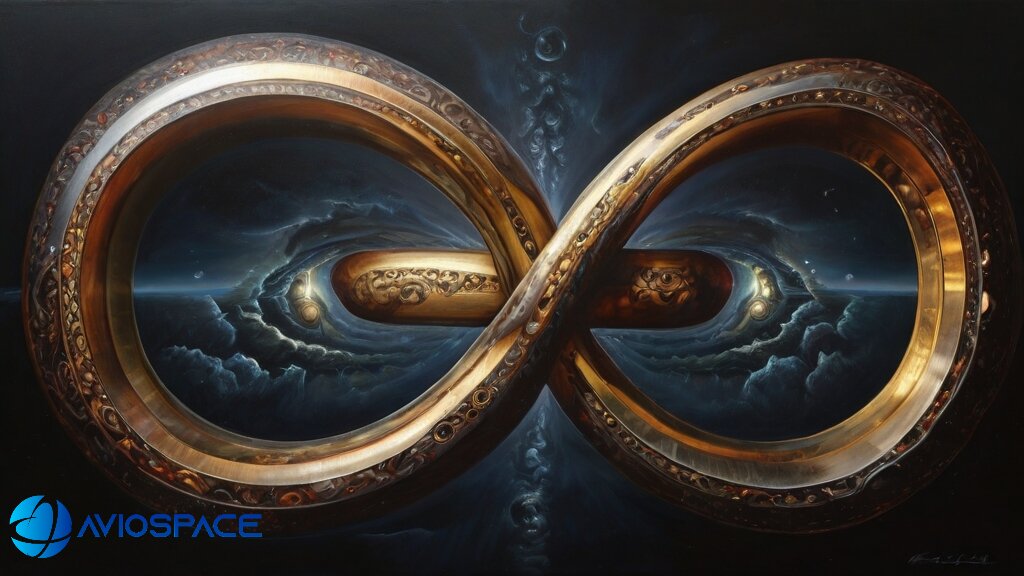
A sentiment akin to this was encapsulated in James Joyce’s Ulysses:
“To reflect that each one who enters imagines himself to be the first to enter whereas he is always the last term of a preceding series even if the first term of a succeeding one, each imagining himself to be first, last, only and alone whereas he is neither first nor last nor only nor alone in a series originating in and repeated to infinity.“
What is space made of?
Space, if not a near-perfect vacuum, can be considered a region with very low densities of particles such as hydrogen, helium, and trace amounts of other elements. Space has a density of 1 electron per cubic centimeter in interstellar Space. It is rife with electromagnetic radiation, including cosmic microwave background radiation and light from stars and galaxies. But even the emptiness of space is a myth- it is a region where virtual particle-antiparticle pairs are popping in and out of existence in extremely tiny timescales.
Does the space have a map?
In the maps of the universe are a distribution of galaxies, galaxy clusters, cosmic microwave background radiation, and other cosmic large-scale structures. These have helped us observe the cosmic microwave background radiation, and anisotropies there, and help push theoretical constructs where such riddles are answered.

What was the first thing in Space?
One source claims that a V-2 rocket by the name of MW 18014 (launched in 1944, climbing 176 kilometers) was the first in space while the other claims that Bumper-WAC (launched in 1949, reaching 393 kilometers) was.
Which was the first living thing in Space?
Fruit flies, which are genetically close to humans and proliferate across multiple generations within a single human lifespan, were the first to space. They were chosen for the aforementioned qualities as they are excellent for conducting space research. The rockets flung them across the Karman line in less than 200 seconds. During their flight back, they were recorded and brought them back alive.
What came first, Space or time?
It took the maddening genius and his extraordinary creative leap to correlate independent properties: “space” and “time.” and conclude that these two “concepts” had a co-dependent origin. Before him, the collective phrase “spacetime” didn’t exist.

When was the first death in Space?
Only one death has been recorded in Space. This was amidst the Soyuz 11 mission where Soviet cosmonauts- Georgy Dobrovolsky, Vladislav Volkov, and Viktor Patsayev- during their voyage back to Earth after spending 23 days in Space. After their visit to Salyut I- the World’s First Space Station- their cabin depressurized, and eventually led to the asphyxiation of the crew.

Vladimir Komarov, (the first person to die in space) walking with his wife and daughter.
Vladimir Komarov, who was the first Russian to go to Space on two different occasions, died while returning from a spacecraft, during reentry, making him the first to lose his life on a spacecraft. A parachute failure led to him being mashed on the ground, so technically we might not be able to dub it a “death in space.”
